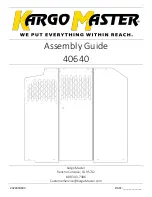
51)
The ESC system cannot alter the
natural laws of physics, and cannot
increase grip, which depends on the
condition of the road.
52)
The ESC system cannot prevent
accidents, including those due to excessive
speed on corners, driving on low-grip
surfaces or aquaplaning.
53)
The capability of the ESC system must
never be tested irresponsibly and
dangerously, in such a way as to
compromise personal safety and the safety
of others.
54)
The HH system is not a parking brake,
therefore do not leave the vehicle without
activating the handbrake, switching off
the engine, and engaging first gear, with
the vehicle parked in safe conditions.
55)
There may be situations on small
gradients (less than 8%), with car laden or
a trailer attached to it (where provided),
in which the HH system may not activate,
causing a slight reversing motion and
increasing the risk of collision with another
vehicle or object. The driver is, in any
case, responsible for safe driving.
56)
For the correct operation of the ASR
system, it is essential that the tyres are
of the same make and type on all wheels,
in perfect condition and, above all, of
the specified type and dimensions.
57)
If the space-saver wheel (where
provided) is used, the ASR system keeps
operating. Always remember that the
space-saver wheel, being smaller than the
original wheel, provides less grip.
58)
The ASR cannot overrule the natural
laws of physics, and cannot increase
the grip available according to the
condition of the road.
59)
The ASR system cannot prevent
accidents, including those due to excessive
speed on corners, driving on low-grip
surfaces or aquaplaning.
60)
The capability of the ASR must never
be tested irresponsibly and dangerously, in
such a way as to compromise personal
safety and the safety of others.
61)
Do not take unnecessary risks, even if
your vehicle is fitted with an ASR system.
Your driving style must always be suited to
the road conditions, visibility and traffic.
The driver is always responsible for road
safety.
62)
The PBA system cannot increase tyre
grip on the road over the limits imposed by
laws of physics: always drive carefully
according to the conditions of the road
surface.
63)
The PBA system cannot prevent
accidents, including those due to excessive
speed on bends, travelling on low-grip
surfaces or aquaplaning.
64)
The PBA system is an aid for the driver,
who must always pay full attention while
driving. The responsibility always rests with
the driver.
65)
The capability of the PBA system must
never be tested irresponsibly and
dangerously, in such a way as to
compromise the safety of the driver, the
other occupants of the vehicle or any other
road user.
iTPMS System
(indirect Tyre
Pressure
Monitoring System)
(where provided)
DESCRIPTION
The vehicle can be equipped with the
iTPMS (indirect Tyre Pressure
Monitoring System) which monitors the
tyre inflation status thanks to wheel
speed sensors.
To access the iTPMS screens ( fig. 50 -
fig. 51), press the TRIP button.
The fig. 51 screen will be displayed only
if one or more tyres are flat.
Correct tyre pressure
If the pressure of all the tyres
corresponds to the correct value, the
display shows the fig. 50 screen.
50
AB0A0123C
60
SAFETY
Summary of Contents for 595
Page 1: ...A B A R T H 5 9 5 O W N E R H A N D B O O K...
Page 10: ...8...
Page 27: ...MANUAL CLIMATE CONTROL where provided CONTROLS 1 5 2 3 4 26 AB0A0223C 25...
Page 78: ...Passenger side front airbag and child restraint systems IMPORTANT 70 AB0A0072 76 SAFETY...
Page 155: ...Uconnect 5 LIVE Nav LIVE Controls on front panel TRIP 123 AB0A0367C 153...
Page 169: ......
Page 170: ...NOTE...
















































